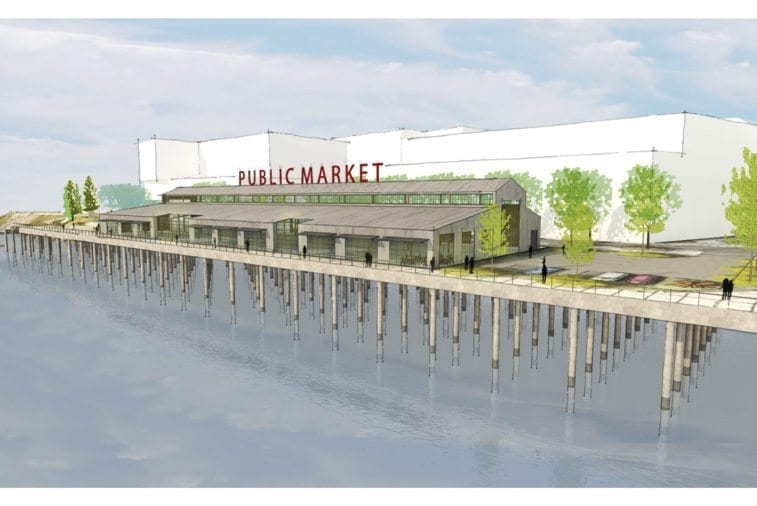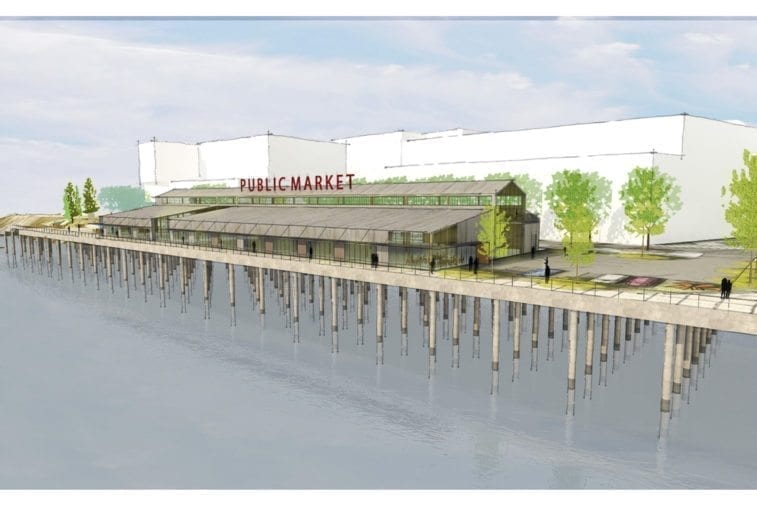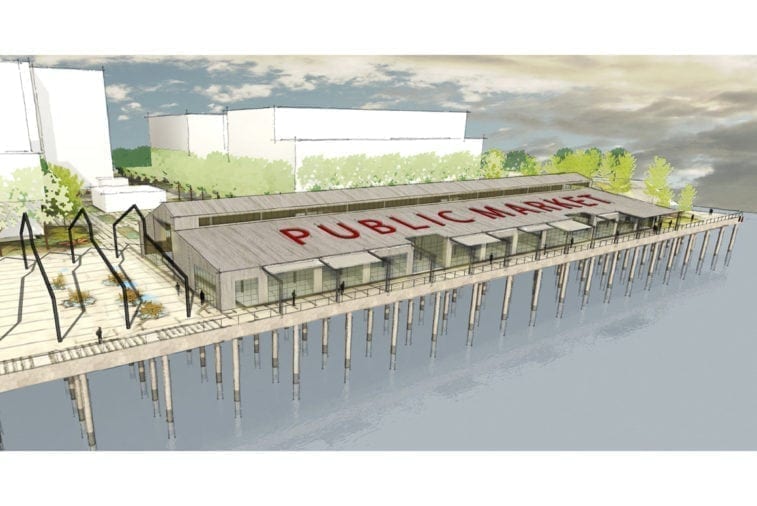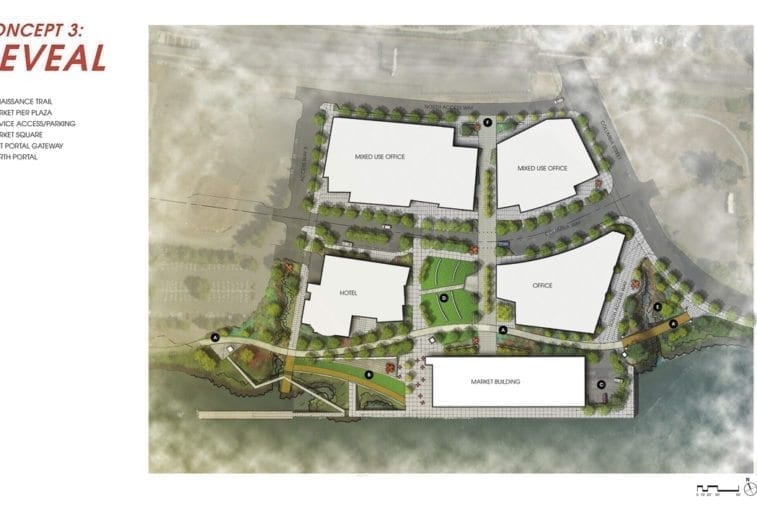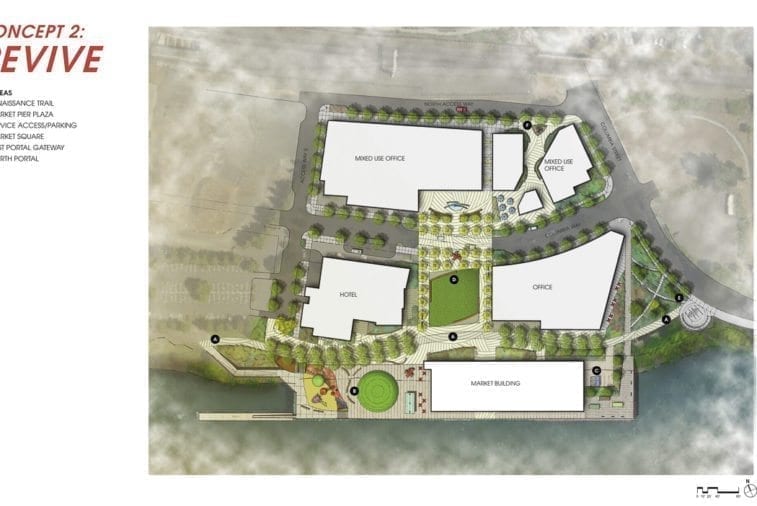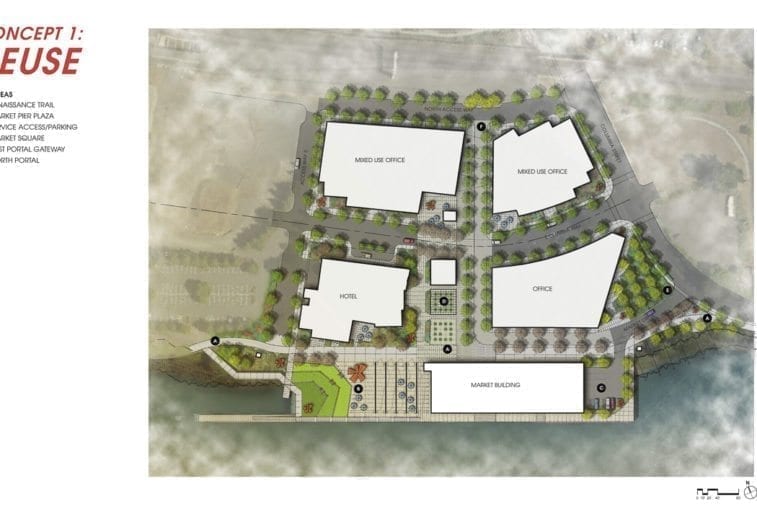The preferred concept for a new public market building at the Port of Vancouver will be unveiled in August
VANCOUVER — The public got its first chance to see what the future of the Port of Vancouver’s Terminal 1 property might be at an open house this week.
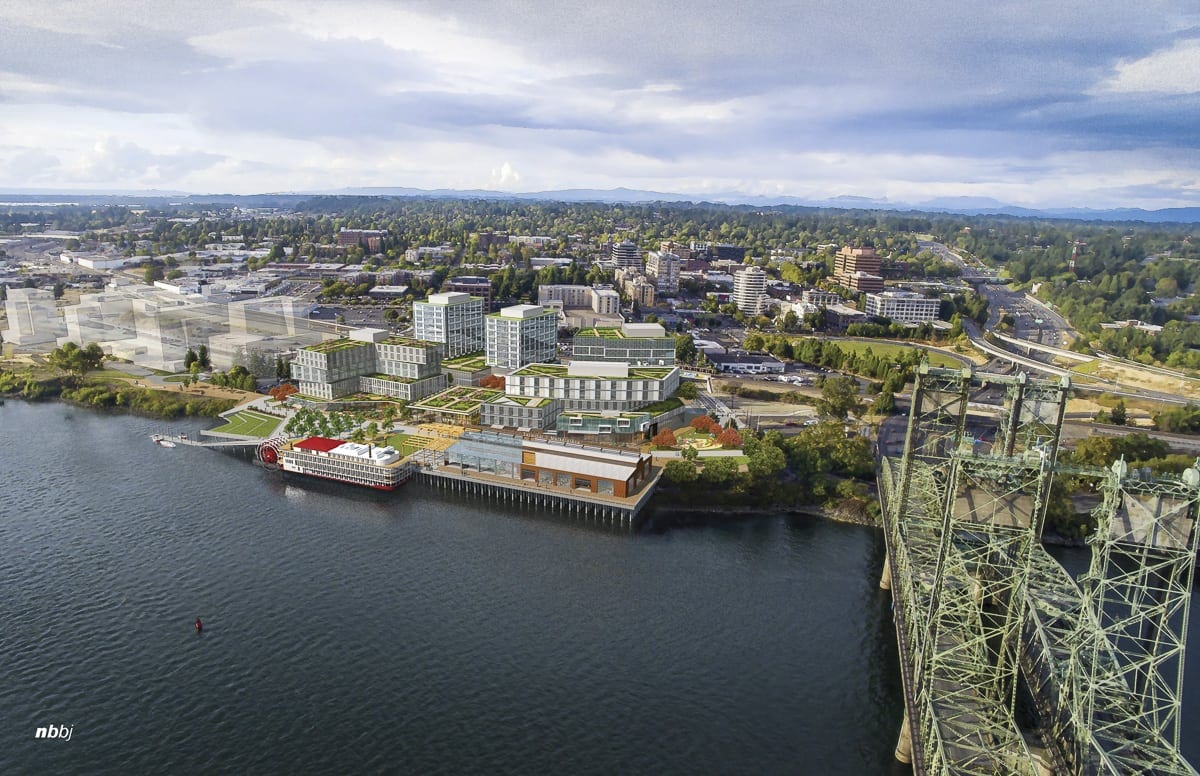
The Port has contracted with Seattle-based Graham Baba Architects and GreenWorks Landscape design of Portland to put together concepts for the 10-acre site. It is slated to include a Public Market that will replace the old Terminal 1 building, and the current Warehouse 23 restaurant location.
While costs for the project aren’t yet known, conservative estimates are anywhere from $45-60 million. That includes an estimated $28 million for work to shore up the bank of the Columbia River, and improve the infrastructure of the piers that Terminal 1 has rested on for the last century. That likely means the future public market planned for the space wouldn’t happen until well into the next decade.
At Tuesday night’s open house, the Port and its partners showed off three concepts for the market building, as well as three possible designs for the four blocks around it that are on Port property.
These three concepts show possible designs of the Public Market destined to replace Terminal 1 at the Port of Vancouver. Photos courtesy Graham Baba Architects
These three concepts show several options for the landscaping around the 10-acre Terminal 1 development. Photos courtesy GreenWorks
Last month, Vesta Industries completed demolition of the old Columbia Shores office building, with plans to build a 160-room AC by Marriott hotel on the space. Several other buildings are planned for the other blocks, mostly mixed use office and retail spaces, with some residential apartments anticipated as well.
While the public market concepts are largely similar in function, they differ in terms of physical design. All harken back to the history of the Terminal 1 building, and would even incorporate as much of the existing building as possible in the final design. The plan is to bring in three larger restaurants for the space, along with other food and art vendors. The buildings would all feature views of the Columbia River to the west, as well as views to the east. Right now the Interstate Bridge obscures Mount Hood, but it’s expected that a new bridge would include a raised I-5, which could allow views of the mountain underneath the freeway.

The Port’s development of the Terminal 1 space comes as Gramor Development and the city of Vancouver start to wind down the first phase of development on their $1.5-billion dollar Waterfront development. Starting this September, the public can access the new 7.3-acre park, which includes a pier that juts out over the Columbia River. A number of high-end restaurants and retailers have already signed on to be part of the development.
Jonathan Eder with the Port says their hope is to have the Terminal 1 development compliment what the city and Gramor are doing.
“We want to be able to take that history of the Port, and Vancouver, and make it a fabulous public amenity” Eder told the audience. “We also want, as we continue to develop, to look at the local and regional arts and highlight it in this development as well.”

The goal is to narrow things down to a single option in August, then start putting together the numbers to figure out how much the development would cost. A number of challenges and questions remain before they can get there. Not the least of which is the eventual Interstate Bridge project, which is likely to cut into the property’s east end. It’s something the planners are having to try and account for, even though it’s not yet a reality. That means actually moving the building west by at least 30 feet to make way for the eventual freeway realignment.
“There is a lot of permitting, and a lot of things to do related to moving a building like this over the water,” Eder said with a rye smile, “not an easy task. We have a great team that’s working on it, and we are very positive and feel that that process is going to move forward, which will allow us to reconstruct this building to the west.”
There’s also the question of where people will park. While the 160-room hotel will include guest parking, little else in the planning stages at this point included spaces for vehicles. In fact, the goal according to GreenWorks’ design concepts would be to have a way to shut Columbia Boulevard down to vehicle traffic in the center of the development, so it could be used for events.

“There are parking requirements that we’re going to have to deal with now,” says Eder, “and in the interim, as we go forward, we’re going to have solve these problems and figure out how to park cars down here.”
Perhaps the biggest hurdle remains the issue of funding. With a significant amount of money tied up in the Port’s rail line development at Terminal 5, bonding capacity is largely tapped out. Some of the options include public fundraising, or potentially floating a small increase to the Port’s operating levy. But while funding issues might delay parts of the development a bit, Port officials are confident they’ll be able to figure out a solution eventually.
Members of the public in attendance Tuesday were given sticky notes and boards to share their thoughts about the design concepts. One suggested the addition of an attraction like a Ferris Wheel. The major criticism seemed to center on the “Public Market” sign, with some calling it too derivative, and another wondering why it didn’t say “Vancouver Market” instead. It turns out branding would eliminate the ability to potentially get grant money for the signage, which is why it’s been kept generic up to this point.
In the end, the final concept is likely to be a blending of the three options shown off at the open house. Whatever the timeline looks like after this year, Port officials are hopeful they’ll at least have a better picture of the challenges and opportunities, and where they can go from here.




